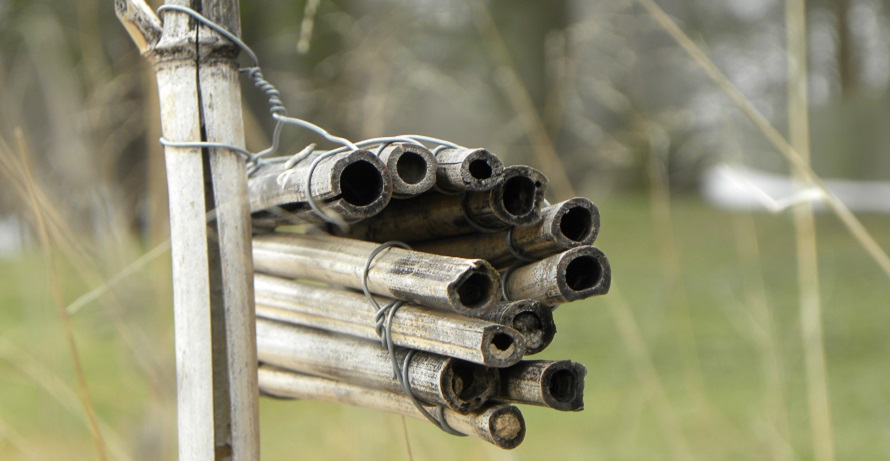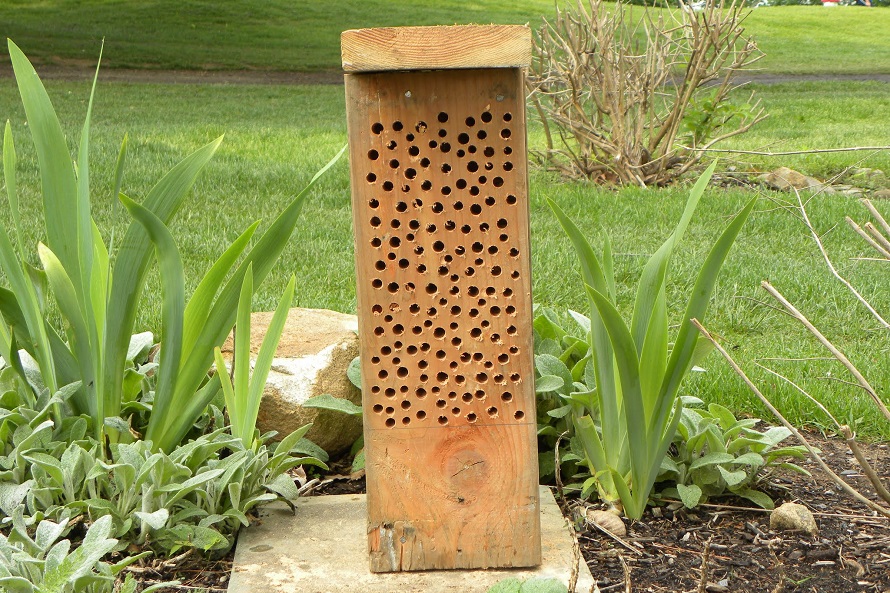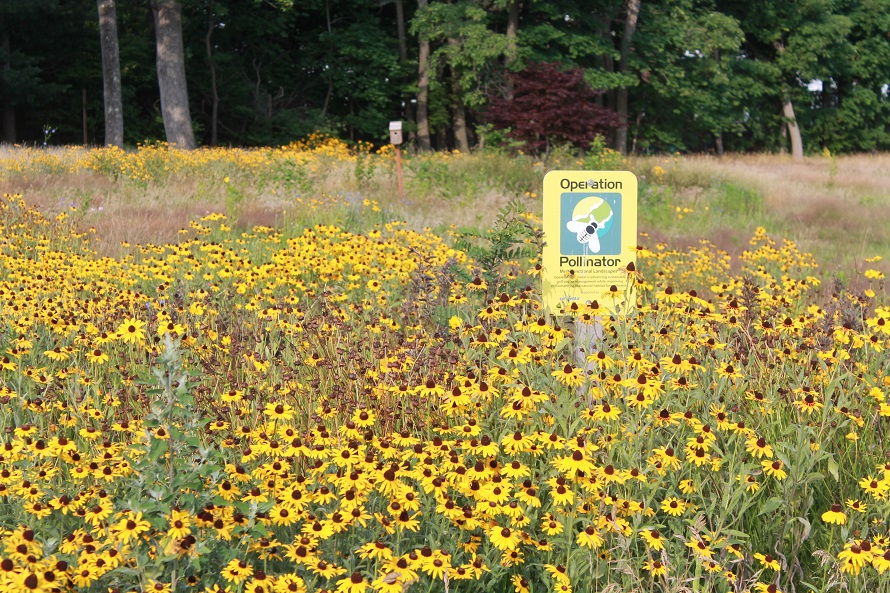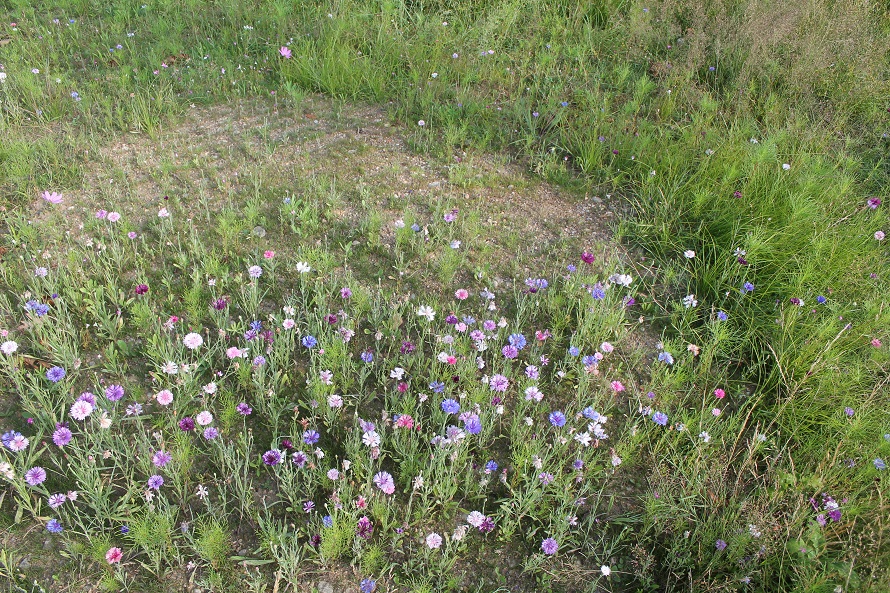Habitat for pollinators includes foraging habitat and nesting sites. Pollinator-friendly habitat contains a diversity of blooming plants of different colors and heights, with blossoms throughout the entire growing season. Native plants are best, proving the most nutritious food source for native pollinators. Even plants we consider weeds provide important habitat. For example, red clover provides an important nectar and pollen source. Providing nesting sites for native species can be accomplished by taking simple steps in out-of-play areas, such as leaving stems and coarse, woody debris and leaving exposed patches of well-drained soil, or by creating nesting areas such as wooden nesting boxes for hole nesting bees or bamboo sticks as shown in the pictures below.


Pollinator habitat on the golf course includes both the areas renovated specifically with pollinators in mind and the existing out-of-play areas. For example, one of the most effective BMPs for protecting water quality also protects pollinator habitat, i.e., leaving a low- or no-management buffer strip around water courses and bodies of water. Opportunities for renovation can be used to enhance the habitat for pollinators with native plants, wildflowers, and flowering trees and shrubs. Part 2 of our video case study describes the process used to establish native areas during renovations at Rockville Links Club in Rockville Centre on Long Island.
For more information see:
- Making Room for Native Pollinators, Matthew Shepherd.
- Specialist bees of the Mid-Atlantic and Northeastern United States, Xerces Society for Invertebrate Conservation and United States Geological Society, lists host plants preferred by northeast bee species.
- Recommendations regarding pollinator plants, native plant nurseries and seed companies, conservation guides, and policies.
Best Management Practices
- Utilize native species when renovating out-of-play areas.
- Choose flowers of different shapes, sizes, and colors.
- Choose species that bloom at different times of the year.
- Include both perennials and annuals in native plant areas.
- Choose south-facing sites whenever possible for establishing native areas.
- Leave stems and coarse, woody debris in native areas for pollinator nesting.
- Leave exposed patches of well-drained soil in native areas for pollinator nesting.


